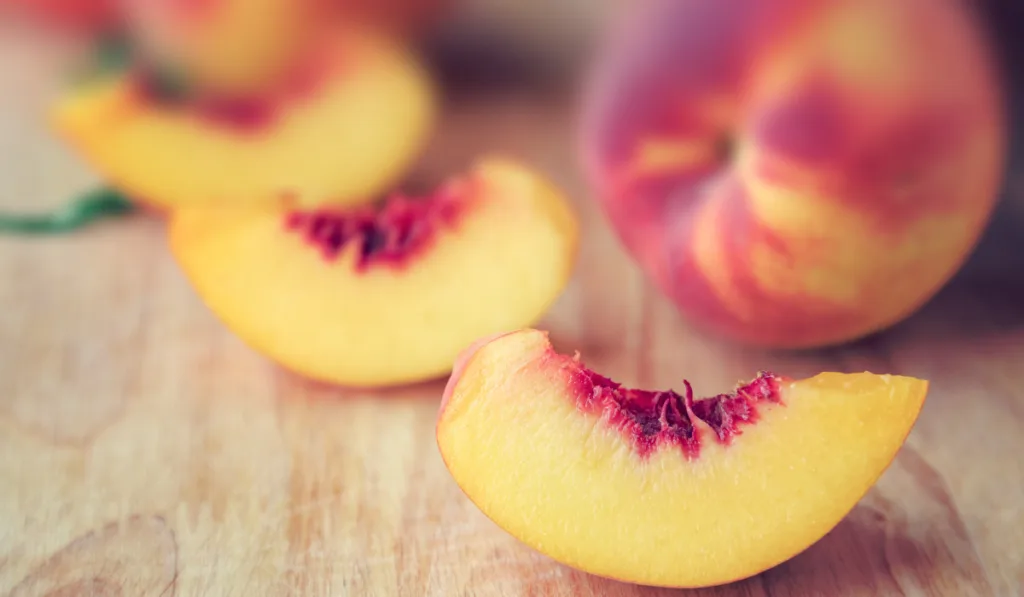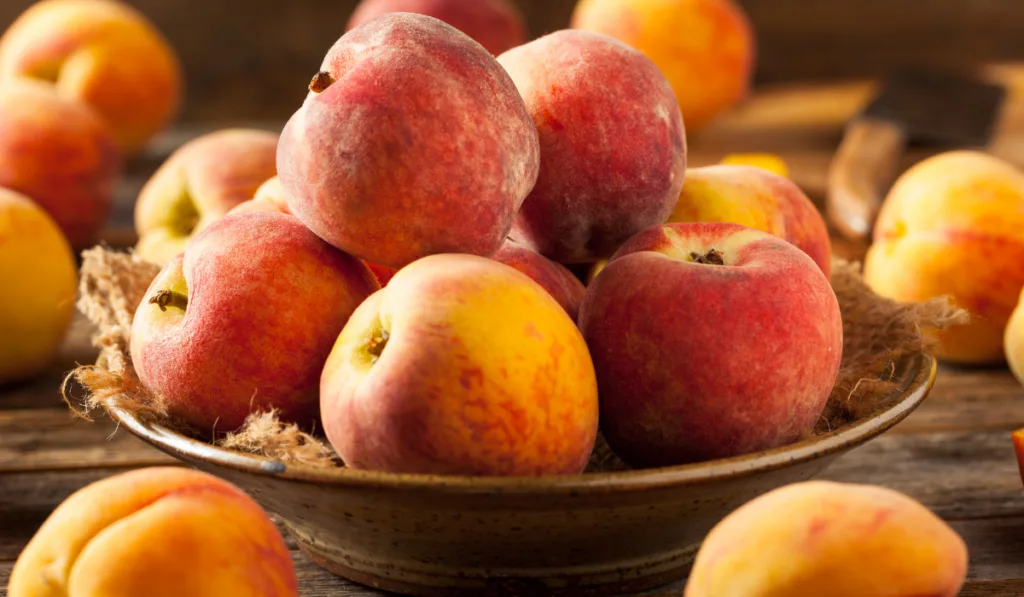Seeing your peach turn brown when you cut it might have you thinking the peach is bad.
But this is not always so; when peaches turn brown inside, they may not be bad.
Why do peaches turn brown inside?
Generally, peaches turn brown or reddish-brown inside because their insides have been exposed to air. When you cut a peach, you leave a specific group of enzymes within the fruit open to oxygen. When these enzymes come in contact with oxygen, they become activated and create the brownish coloration.
Below, we shed more light on the reason peaches turn brown inside. We also discuss ways to keep your peaches’ insides from turning brown.

Table of Contents
Why Do Peaches Turn Brown Inside?
Peaches turn brown inside when you cut them because of the oxygen in the air. Oxygen activates a group of enzymes – polyphenol oxidases – inside the peach fruit.
When activated, these enzymes promote the production of reddish-brownish pigments known as quinones. The reddish-brownish pigments, in turn, make peaches turn brown or brownish-red inside.
The phenomenon where peaches turn brown inside after cutting them is known as enzymatic or food browning. It is not particular to peaches as you may notice the same thing in fruits like avocados, apples, pears, or bananas.
Can I Eat Peaches That Have Turned Brown Inside?
While they may not look appealing, you can eat peaches that have turned brown inside. Of course, this depends on the absence of any sign of spoilage like mold growth or a putrid odor.

How Do You Stop Peaches from Turning Brown Inside?
As said already, peaches that have turned brown inside are still edible. But understandably, the discoloration might be unappealing to some people.
If you do not like seeing your peaches turn red inside, you can stop the process by doing any of the following:
- Place the peaches in water when you cut them. This blocks or reduces the amount of oxygen that reaches the fruit.
- Coat the cut peaches with edible acidic juice. You can use orange, lime, or lemon juice for this. The ascorbic acid in these acidic juices will reduce the activity of the enzymes by reducing the amount of substrate available for oxidation.
- Place the peaches in acidic juice and water. Mix the acidic juice with cold water. Then, place the peaches in the mixture.
- Place the peaches in honey water. To prepare honey water, mix two tablespoons of honey into one cup of water. Once the mixture is ready, add the cut peaches to it.
- Mix the cut peaches with cut acidic fruits. In other words, cut some oranges, limes, or lemons and mix them with cut peaches. If you choose to do this, cut the acidic fruits first. If you cut the peach first, they may turn brown before you finish cutting the acidic fruits.
- Apply a food grade anti-browning agent. Follow the instructions on the product to use it.

How Do I Keep Peaches Fresh?
You can keep ripe, uncut peaches fresh by storing them in the refrigerator. If you intend to store them in a refrigerator, place them in large bags with big holes.
If you are not storing peaches in a refrigerator, you can store them in a large, open bag. But you should not let them pile on each other. You should also keep them away from other fruits.
If cut, you can keep peaches fresh by wrapping them tightly with plastic and storing them in a refrigerator.
Any of the methods above can keep your peaches fresh for around 3 to 5 days.
If you want to store your peaches for a more extended period, freeze them.
Freezing preserves peaches for extended periods. However, you may not get the same freshness when you finally thaw the fruit.

Final Thoughts
Peaches turn brown inside because the oxygen in the air activates some enzymes that produce a reddish-brownish pigment.
While they may look unappetizing, peaches that have turned brown shortly after cutting are edible. But if you would prefer not to have your peaches turn brown, coat them with orange, lime, or lemon juice.
Resources
- https://www.mrswages.com/how-do-you-keep-peaches-from-turning-brown-when-canned
- http://www.decodingdelicious.com/why-apples-turn-brown
- https://food.unl.edu/article/how-prevent-cut-fruit-turning-brown
- https://www.ncbi.nlm.nih.gov/pmc/articles/PMC7355983/
- https://www.glad.com/food-protection/protection-pointers/how-to-freeze-and-store-peaches/
